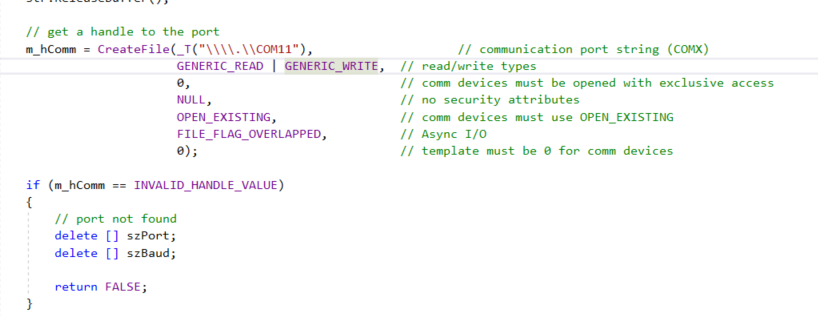线性代数 python_Python | 线性代数
线性代数 python
Linear Algebra is a branch of mathematics that deals with large data by the use of Vectors and Matrices. It introduces a different way of viewing and understanding large data. Matrices and Vectors are the primary tools and are used for data representations. A vector is also a unit column matrix. Linear Algebra can also be defined as “Mathematics of n-dimensional Space”. It involves four subspaces:
线性代数是数学的一个分支,它通过使用向量和矩阵来处理大数据。 它引入了查看和理解大数据的另一种方式。 矩阵和向量是主要工具,用于数据表示。 向量也是单位列矩阵。 线性代数也可以定义为“ n维空间数学”。 它涉及四个子空间:
Column Space
列空间
Row Space
行空间
Null Space
空空间
Left Null Space
左空空间
There are multiple types of matrices and multiple operations that can be done on Matrices. In this learning sequence, we are going to use python to implement these matrices and how to manipulate them using different operations.
有多种类型的矩阵和可以对矩阵执行的多种操作。 在此学习序列中,我们将使用python实现这些矩阵以及如何使用不同的操作来操纵它们。
Why should we use Python?
为什么要使用Python?
Python is a higher-level computer programming language. Apart from this, it provides a large number of packages (mainly numpy for matrices and vectors) which allow us to perform operations on big data very effectively as well as it is very efficacious.
Python是高级计算机编程语言。 除此之外,它提供了大量的程序包(主要是矩阵和矢量的numpy程序包),这些程序包使我们能够非常有效地对大数据执行操作,并且非常有效。
Python is being used almost everywhere. Python use in projects, software development, algorithmic programming/machine learning, and research made it one of the cardinal languages in computer science. Python provides a freehand for learning Linear Algebra so that you can implement it in any of the domains.
几乎所有地方都在使用Python。 Python在项目,软件开发,算法编程/机器学习和研究中的使用使其成为计算机科学中的主要语言之一。 Python提供了学习线性代数的徒手画法,因此您可以在任何领域中实现它。
线性代数中的python程序列表 (List of python programs in linear algebra)
Defining a Vector using list
使用列表定义向量
Defining Vector using Numpy
使用Numpy定义向量
Vector with User Defined Length
用户定义长度的向量
Adding two vectors
两个向量相加
Scalar Multiplication of Vector
向量的标量乘法
Scalar Multiplication of Vector using NumPy
使用NumPy对向量进行标量乘法
Scalar Multiplication Property 1
标量乘法属性1
Scalar Multiplication Property 2
标量乘法属性2
Adding Dimension to the Vector
向向量添加维
Calling ith dimensional Component of Vector
调用向量的第i维分量
Vector Magnitude using Function
使用功能的矢量幅度
Dot Product of Vectors
向量的点积
Cosine Similarity between two vectors
两个向量之间的余弦相似度
A Linear Function Vector
线性函数向量
Random Integer Vector
随机整数向量
Defining Matrix using Numpy
使用Numpy定义矩阵
Creating a Matrix using Columns
使用列创建矩阵
Creating a Matrix using Rows
使用行创建矩阵
Calling Column of a Matrix
矩阵的调用列
Calling Row of a Matrix
调用矩阵的行
Matrix Addition
矩阵加法
Row numbers in a Matrix
矩阵中的行号
Scalar Multiplication of Matrix
矩阵的标量乘法
Shape of Matrix
矩阵形状
(i,j) Element from a Matrix
(i,j)矩阵中的元素
Calling Column of a Matrix using Function
使用函数调用矩阵的列
Calling Row of a Matrix using Function
使用函数调用矩阵的行
Checking Square Matrix
检查平方矩阵
Python | Vandermonde Matrix
Python | 范德蒙矩阵
numpy.matmul( ) for Matrix Multiplication
numpy.matmul()用于矩阵乘法
Python | Constant Matrix
Python | 常数矩阵
Python | Range of a Matrix
Python | 矩阵范围
Python | Rank of a Matrix
Python | 矩阵等级
Python | Trace of a Matrix
Python | 矩阵的痕迹
Python | Sign and Natural Logarithm of Determinant of a Matrix
Python | 矩阵行列式的符号和自然对数
Python | Diagonal of a Matrix
Python | 矩阵的对角线
Python | Lower Triangle of a Matrix
Python | 矩阵的下三角
Python | Upper Triangle of a Matrix
Python | 矩阵的上三角
numpy.random.random( ) function with no input parameter
没有输入参数的numpy.random.random()函数
randomisation() Function to generate Random Vector
randomisation()函数生成随机向量
randomisation_matrix() Function to generate Random Matrix
randomisation_matrix()函数生成随机矩阵
Printing the power of vector/matrix elements using pow(x,a)
使用pow(x,a)打印矢量/矩阵元素的幂
Printing sin value of vector/matrix elements using numpy.sin()
使用numpy.sin()打印向量/矩阵元素的sin值
Printing hyperbolic tangent value of vector/matrix elements using numpy.tanh()
使用numpy.tanh()打印向量/矩阵元素的双曲正切值
Printing Cosine value of vector/matrix (element wise operation)
打印向量/矩阵的余弦值(明智的操作)
Printing logarithmic value of vector/matrix (element wise operation)
打印向量/矩阵的对数值(元素明智的操作)
Printing exponential value of vector/matrix elements using numpy.exp()
使用numpy.exp()打印矢量/矩阵元素的指数值
Print the identity matrix using numpy.eye() function
使用numpy.eye()函数打印身份矩阵
Identity Matrix Property (I^k = I)
单位矩阵属性(I ^ k = I)
Identity Matrix Property (AI = A)
身份矩阵属性(AI = A)
Representation of a Linear Equation
线性方程的表示
Representation of a System of Linear Equation
线性方程组的表示
Transpose Matrix
转置矩阵
Identity Matrix Transpose Property
单位矩阵转置属性
Symmetric Matrices
对称矩阵
Creating Symmetric Matrices
创建对称矩阵
Sum of Symmetric Matrices
对称矩阵之和
Ones matrix using numpy.ones()
使用numpy.ones()的人矩阵
Zeros Matrix using numpy.zeros()
使用numpy.zeros()的Zeros矩阵
Determinant of a Matrix
矩阵的行列式
Determinant of Identity Matrix
身份矩阵的行列式
Determinant of a Transpose Matrix
转置矩阵的行列式
Determinant of a Zeros and Ones matrices
零和一矩阵的行列式
Determinant of a non-square matrix
非平方矩阵的行列式
Inverse of a Matrix
矩阵的逆
Inverse of an Identity Matrix
单位矩阵的逆
Minimum value from a Matrix
矩阵的最小值
Maximum value from a Matrix
矩阵的最大值
Mean value from a Matrix
矩阵的平均值
Product of a Matrix and its Inverse Property
矩阵的乘积及其逆性质
Product of a Matrix and its Transpose Property
矩阵的乘积及其转置特性
Comparing Maximum from Matrices
从矩阵比较最大值
Comparing Minimum from Matrices
从矩阵比较最小值
Norm of the Vector
向量的范数
Outer Product of Vectors
向量的外积
Outer Product Properties
外部产品属性
Python | Application to School CPI Records (Linear Algebra)
Python | 申请学校CPI记录(线性代数)
神经网络 (Neural Network)
Introduction to Simplest Neural Network
最简单的神经网络简介
Uni - Layer Neural Network
单层神经网络
Python | One Hidden Layer Simplest Neural Network
Python | 隐层最简单神经网络
线性代数在机器学习中的应用 (Application of Linear Algebra in Machine Learning)
Hinge Loss for Single Point
单点铰链损耗
Function for Hinge Loss for Single Point
单点铰链损失功能
Function for Hinge Loss for Multiple Points
多点铰链损失功能
Binomial Process
二项式过程
Python | Binomial Experiment Simulation
Python | 二项式实验模拟
Euclidean Distance Example
欧氏距离示例
翻译自: https://www.includehelp.com/python/linear-algebra.aspx
线性代数 python



































还没有评论,来说两句吧...